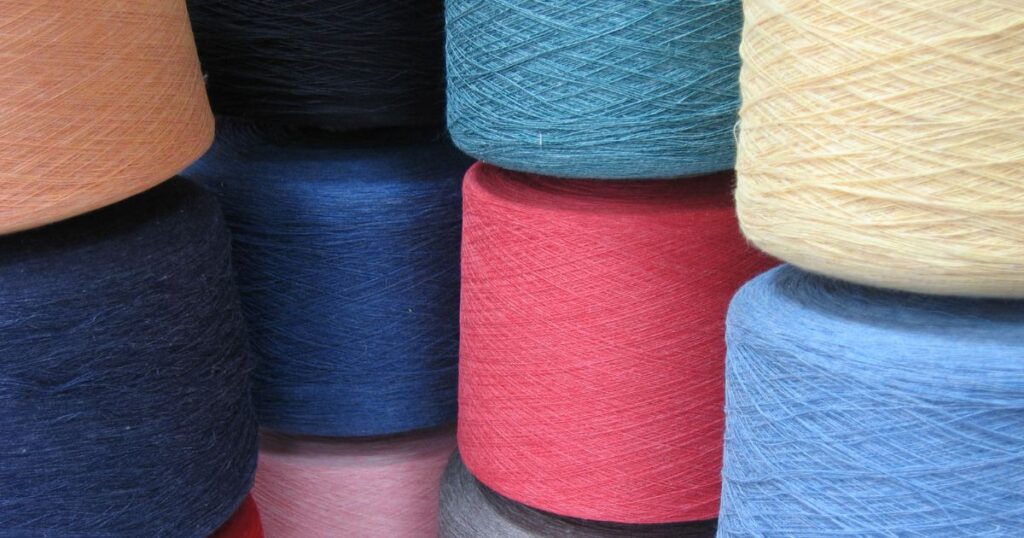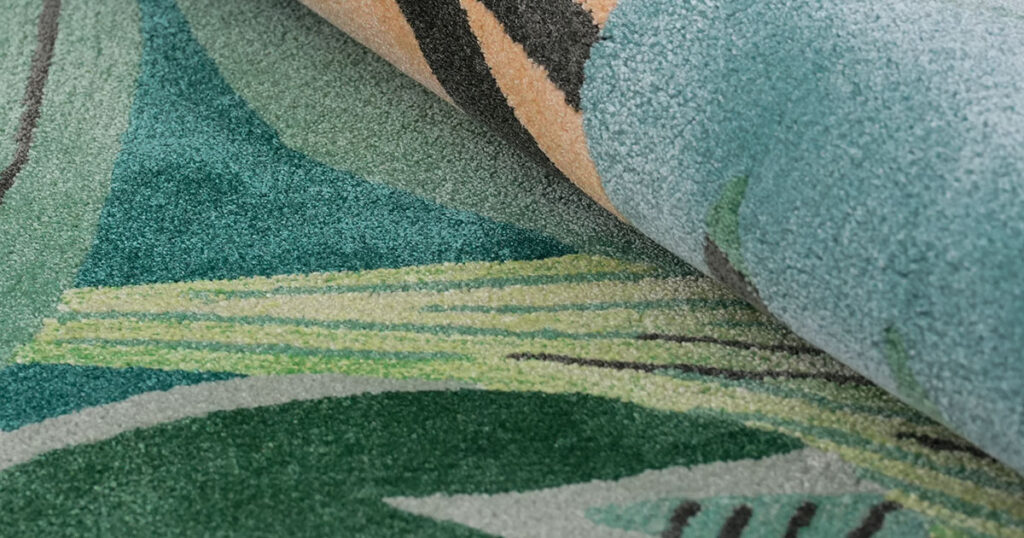Choosing the perfect color for your custom rug is a critical decision that can make or break your room’s aesthetic.
In this comprehensive guide, you’ll learn how to select a rug color that complements your existing decor, evokes the desired mood, and stands the test of time.
We’ll cover everything from color theory basics to practical considerations for your lifestyle and space.
By the end, you’ll be equipped with the knowledge and confidence to choose a rug color that brings your vision to life.
Let’s dive in!
Introduction
The color of your rug plays a crucial role in setting the tone and ambiance of a room. It can impact the perceived size, mood, and overall style of the space.
Selecting the right rug color requires careful consideration of various factors, including the existing color scheme, room size, lighting, and desired atmosphere.
For beginning buyers, understanding the basics of color theory and how different hues influence a room can help guide the decision-making process when choosing a custom rug.
Understanding Color Theory Basics
- The color wheel is divided into primary colors (red, blue, yellow), secondary colors (green, orange, purple), and tertiary colors (combinations of primary and secondary colors).
- Colors can be categorized as warm (reds, oranges, yellows) or cool (blues, greens, purples). Warm colors tend to energize and advance, while cool colors are calming and recede.
- Tints are created by adding white to a color, resulting in lighter and softer variations. Shades are made by adding black, creating darker and more intense versions. Tones are produced by adding gray, leading to more muted and subtle hues.
Consider the Existing Color Scheme of the Room
- Take inventory of the dominant colors present in the walls, furniture, and decor.
This will help determine whether to choose a rug that complements, contrasts, or matches the existing palette. - Complementary colors are opposite each other on the color wheel (e.g., blue and orange) and create a dynamic, vibrant look when used together.
- Analogous colors are adjacent on the color wheel (e.g., blue, blue-green, green) and create a harmonious, cohesive appearance.
- Monochromatic schemes use variations of a single color, resulting in a sophisticated and unified aesthetic.
Think About the Room's Purpose and Desired Atmosphere
Different colors evoke different emotions and moods.
Consider the primary function of the room and the desired ambiance when selecting a rug color.
- For a calming and relaxing atmosphere, opt for cool colors like blues, greens, and purples. These work well in bedrooms, bathrooms, and meditation spaces.
- To create a cozy and inviting feel, choose warm colors like reds, oranges, and yellows. These are ideal for living rooms, dining rooms, and family rooms.
- Neutral colors (beige, gray, taupe) provide a versatile foundation and can adapt to various design styles and color schemes.
Factor in Your Interior Design Style
Your personal taste and interior design style should influence your rug color choice.
Consider whether you prefer a classic, modern, bohemian, or eclectic look.
- Traditional and classic styles often incorporate rich, deep colors like burgundy, navy, and forest green, as well as neutral tones.
- Modern and contemporary spaces tend to favor sleek, monochromatic color schemes with pops of bold accent colors.
- Bohemian and eclectic styles embrace vibrant, diverse color palettes and often mix and match patterns and textures.
Neutral Rugs: A Versatile Foundation
Neutral-colored rugs (beige, gray, ivory, taupe) offer a versatile base that can adapt to changing decor and color schemes over time.
- They provide a calming, grounding effect and allow other design elements, such as furniture and accessories, to take center stage.
Neutral rugs are perfect for those who prefer a minimalist aesthetic or want a timeless foundation for their space.
- Layer textures, patterns, and accent colors through throw pillows, blankets, and artwork to add depth and visual interest.
Making a Statement with Bold Colors and Patterns
- Bold, vibrant rug colors can serve as a focal point and add a striking, eye-catching element to a room.
- Consider using a colorful rug as an accent piece in a neutral space to create a pop of visual interest and energy.
- When incorporating a bold rug, balance it with more subdued furnishings and decor to avoid overwhelming the space.
- Mixing patterns and colors can create an eclectic, playful look. Be sure to vary the scale and intensity of the patterns to maintain visual harmony.
Consider the Material and Texture of the Rug
The material of your rug can impact how colors appear and how the rug feels underfoot. Common materials include wool, silk, cotton, jute, and synthetic fibers.
- Wool rugs are durable, soft, and available in a wide range of colors. They have a slight sheen that can add depth and richness to the hues.
- Silk rugs are luxurious and have a luminous sheen that enhances the vibrancy and saturation of colors. They are best suited for low-traffic areas.
- Cotton rugs are lightweight, affordable, and offer a matte finish that can make colors appear softer and more muted.
- Jute and sisal rugs have a natural, textured appearance that complements earthy, neutral color palettes.
Rug Size and Color: Achieving the Right Proportions
The size of your rug in relation to the room can impact the perceived spaciousness and color balance.
- In smaller rooms, lighter rug colors can help create a sense of openness and airiness, while darker colors can make the space feel more intimate and cozy.
- For larger rooms, consider using a darker or bolder colored rug to anchor the space and create a focal point.
When selecting a rug size, ensure that it is proportional to the room and furniture layout. A rug that is too small can make the space feel disjointed, while an oversized rug can overwhelm the room.
Lighting and Rug Color: Testing in Different Conditions
Lighting plays a significant role in how rug colors appear throughout the day.
It’s essential to view rug samples in the intended room under various lighting conditions.
- Natural daylight can make colors appear cooler and more vibrant, while artificial lighting (incandescent, fluorescent, LED) can cast warm or cool tones that alter the appearance of the rug.
- Test rug samples in the morning, afternoon, and evening to get a comprehensive understanding of how the colors will look in the space.
Consider the placement of windows, skylights, and light fixtures, as they can impact the intensity and direction of light on the rug.
Lifestyle Considerations and Rug Maintenance
When choosing a rug color, consider your lifestyle and the practical aspects of maintenance and cleaning.
- For high-traffic areas and homes with children or pets, opt for darker colors or patterns that can hide dirt and stains more easily.
- Lighter-colored rugs may require more frequent cleaning and spot treatment to maintain their appearance.
Consider the care instructions for different rug materials and colors. Some may require professional cleaning, while others can be maintained with regular vacuuming and spot-cleaning.
Get Creative: Embracing Your Personal Style
Ultimately, the perfect rug color is one that resonates with your personal taste and makes you feel happy and comfortable in your space.
- Don’t be afraid to experiment with unexpected color combinations or bold statements that reflect your unique style.
- Trust your instincts and choose a color that speaks to you on an emotional level.
Your home should be a reflection of your personality and a haven that brings you joy. - If you’re unsure about your color choices, consider consulting with a design professional who can offer guidance and help you navigate the selection process.
Conclusion
Choosing the perfect color for your custom rug involves considering the existing color scheme, room size, lighting, desired atmosphere, interior design style, and practical maintenance aspects.
By understanding the basics of color theory and how different hues impact a space, you can make an informed decision that enhances the overall look and feel of your room.
Remember to trust your instincts, embrace your personal style, and don’t be afraid to get creative with your color choices.
With careful consideration and attention to detail, you can select a custom rug color that beautifully complements your space and brings you joy for years to come.



